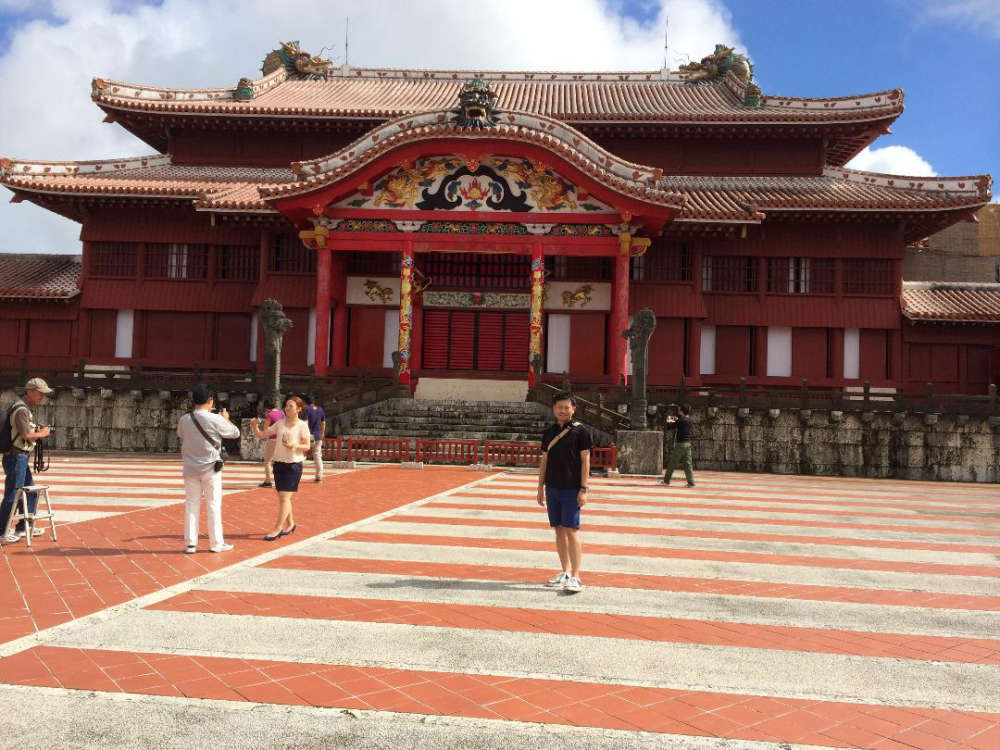
One destination in Japan that many people always ask me about is Okinawa.
This southernmost prefecture is made up of more than 150 islands and its island chain is nestled in the East China Sea between Japan’s main archipelago and Taiwan. Best known, perhaps, for its gorgeous sandy beaches and coral reefs, Okinawa also has many other attractions for visitors to enjoy.
It was the site of major World War II battles, and it has the Peace Memorial Museum that commemorates the 1945 allied invasion which is very extensive and well done. Of course, after the Battle of Okinawa in 1945, the islands were directly under U.S. control until 1972 when the administration of Okinawa reverted back to Japan.
Still today, Okinawa hosts many U.S. bases and facilities that does cause political friction and debate due to the burden placed on Okinawa to host so many bases and U.S. military personnel.
American influence is still felt strongly all over the islands, but especially in the Mihama American Village that consists of many high-rise hotels and resorts, along with a huge shopping and entertainment complex containing a nice mixture of Okinawan and American cultural activities that include unique shops, restaurants, a movie theater, and venues that feature live performances. It is reported that there are over 100 stores and restaurants in this complex, so definitely there is something for everyone.
I found this area to be visited by both tourists and locals, as well as military personnel who live in the area — either on or around the bases. The sunset was especially spectacular from the boardwalk area of the American Village if you are able to time your visit to include the evening sunset.

Historically, Okinawa offers visitors a lot to see and do. It was the center of the Ryukyu Kingdom, and due to its close proximity to China, much trade occurred between Okinawa and China, primarily with the Ming and Qing Dynasties. Okinawa was formally incorporated into the Empire of Japan in 1879 with the Ryukyu Disposition (the annexation of Okinawa during the early years of the Meiji period).
This formally separated Okinawa from the previous Chinese tributary system which was a loosely based network of agreements that mostly involved trade, and foreign and diplomatic relations between China and other states that required them to acquiesce to the Chinese emperor (primarily done to keep the peace and to receive aid when needed under specified conditions).
These states in the tributary system maintained their autonomous independence from China for the most part but recognized China’s military and political superiority as the smaller entities. Hence, why there is so much culture and history borrowed from China throughout the Okinawan islands.
The crown jewel of historic culture and structures in Okinawa is the Shurijo Castle (main photo). First built between 1429 and 1879 it served as the palace for the Ryukyu Kingdom but was nearly destroyed during the Battle of Okinawa in 1945 but was rebuilt to its original specifications and splendor.
Sadly, in 2019, a devastating fired destroyed the palace once again and it is currently under reconstruction but is scheduled to be completed in 2026.
My most recent visit to Okinawa occurred after the fire, but visitors were allowed to peruse the castle area via platforms with glass walls, allowing a view of the reconstruction that was taking place.
While advanced technology is being used in the reconstruction process, traditional craftsmanship is also being employed to maintain the original structure’s integrity. No doubt, this rebuilding will include modern firefighting components like sprinklers and fire-retardant materials.
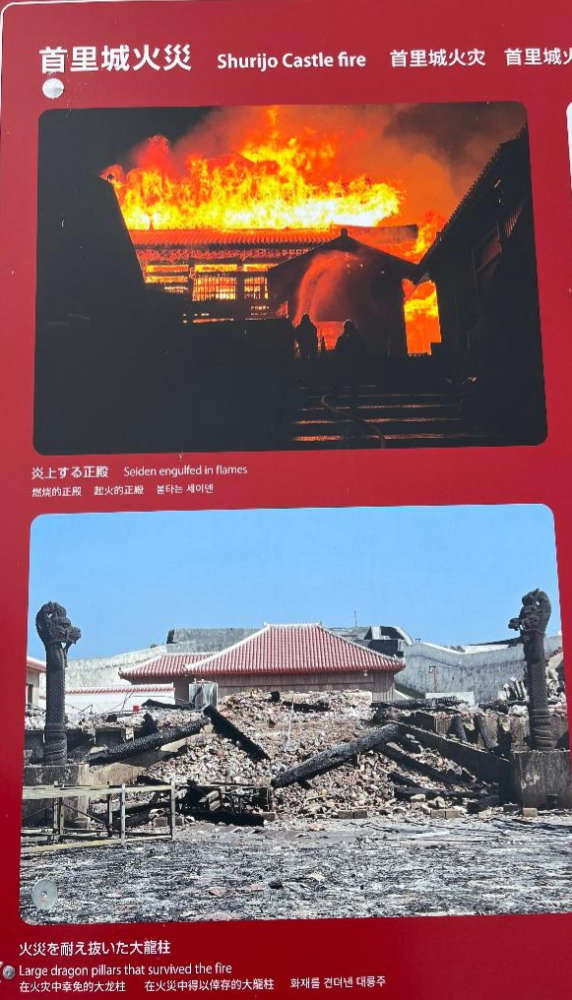
I did have a chance to visit the castle before the fire on several occasions, and it was really lovely. The castle walls are very interesting to explore (photo).

The Okinawa Prefectural Museum and Art Museum is worth visiting, as well. The museum’s exhibitions include natural, historical, and cultural installations including a variety of antiquities and folk arts that represent Okinawa’s rich and varied history. One exhibition hall consists of a private house with a red tile roof. Another installation on the grounds is a traditional thatched roof abode that visitors can enter and observe (photo).
In the Wakasa District of Naha, the Naminoue Shrine (which means above the waves) is an historic landmark Shinto shrine that is located on a cliff overlooking the ocean. The shrine was originally built in the 1300s, but fire destroyed it in 1633, and it was rebuilt and eventually established officially under the Imperial Household Agency in 1890.
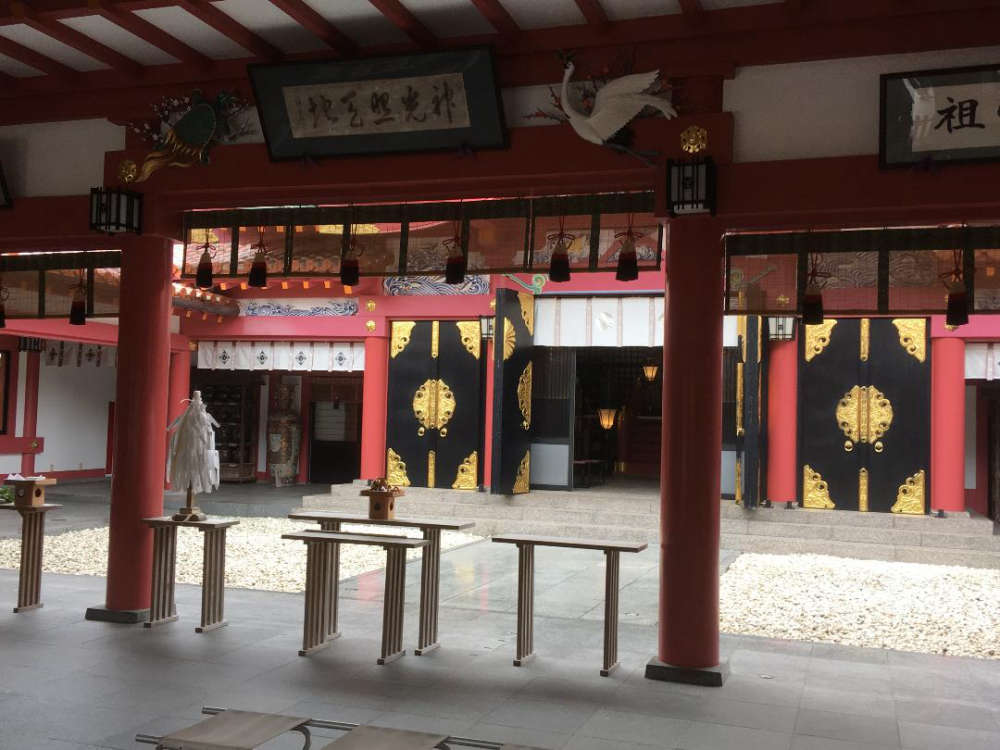
In 1924, the shrine was officially designated as the center for religious affairs on the island. It originally was also the sacred space for the Ryukyuan religion and is still ranked as a nationally significant shrine in Japan (photo).
Another fun activity in Okinawa is to visit the Churaumi Aquarium located within the Okinawa Ocean Expo Aquarium complex. It really is spectacular, very interesting, and well-done. I enjoyed the exhibit “Encounter the Okinawan Sea” that very authentically reproduces the fauna and flora of the sea.
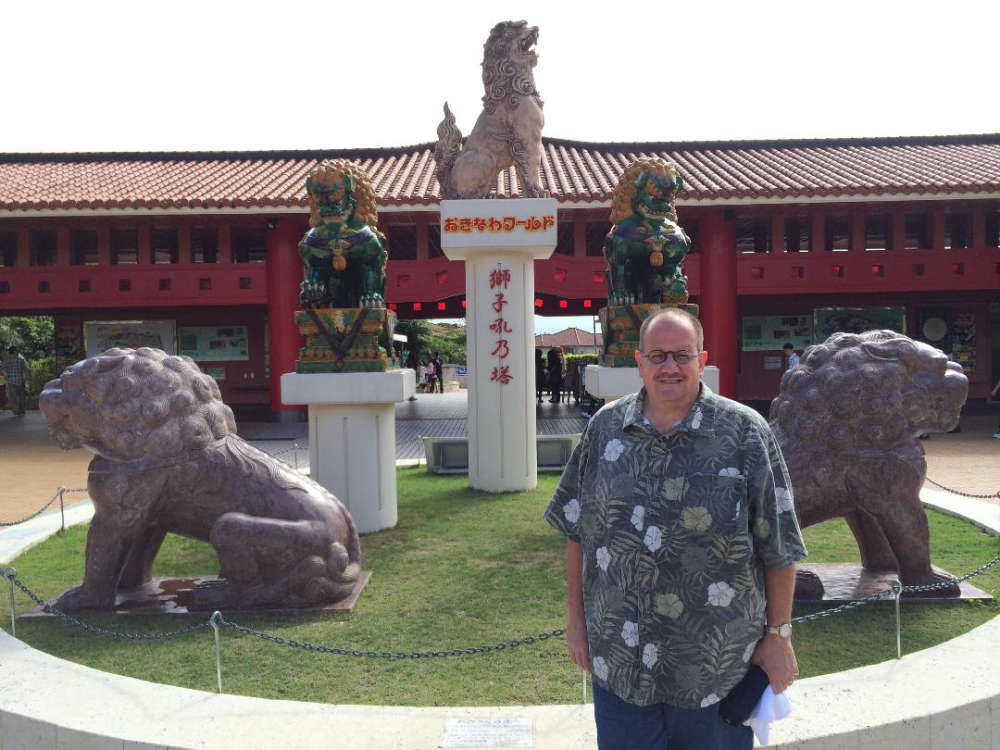
Okinawa World is another attraction, if not a bit touristy, but does offer the first-time visitor some interesting displays. The main focus is Okinawan culture, of course, but it also boasts a huge natural cave to explore, a craft village, and a snake museum (photo, author Todd Leonard).
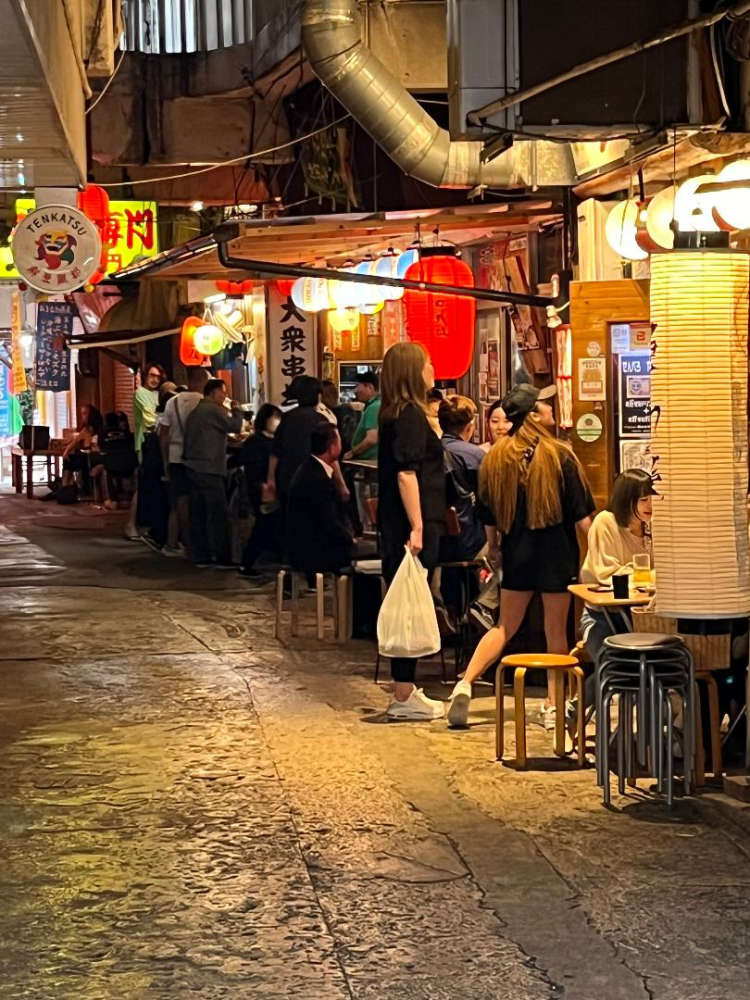
Naha, the capital of Okinawa, is densely populated with buildings very closely placed together. One thing I enjoy doing in Naha is exploring the many side streets that have a lot of local flavors. Small alleyways have some of the best, hole-in-the-wall bars and restaurants (photo).
If fun in the sun is your thing, with cultural and historical landmarks sprinkled throughout, then put Okinawa on your travel itinerary. There is a lot to see and do for the first-time visitor to these beautiful islands.


 Safety and tasty the theme for a good Thanksgiving
Safety and tasty the theme for a good Thanksgiving
 Family sponsors sought for Miracle Tree program
Family sponsors sought for Miracle Tree program
 FSSA announces end of MDwise participation in Indiana Medicaid programs
FSSA announces end of MDwise participation in Indiana Medicaid programs
 Tutoring grants now available for Indiana students and families
Tutoring grants now available for Indiana students and families
 Indiana State Police Troopers receive new look Dodge Durango patrol vehicles
Indiana State Police Troopers receive new look Dodge Durango patrol vehicles
 Winamac VFW Auxiliary honors Vietnam veterans with monument dedication during annual Pulaski County Veterans Day Service
Winamac VFW Auxiliary honors Vietnam veterans with monument dedication during annual Pulaski County Veterans Day Service
 Fulton County Fall Craft Show set for Saturday
Fulton County Fall Craft Show set for Saturday




